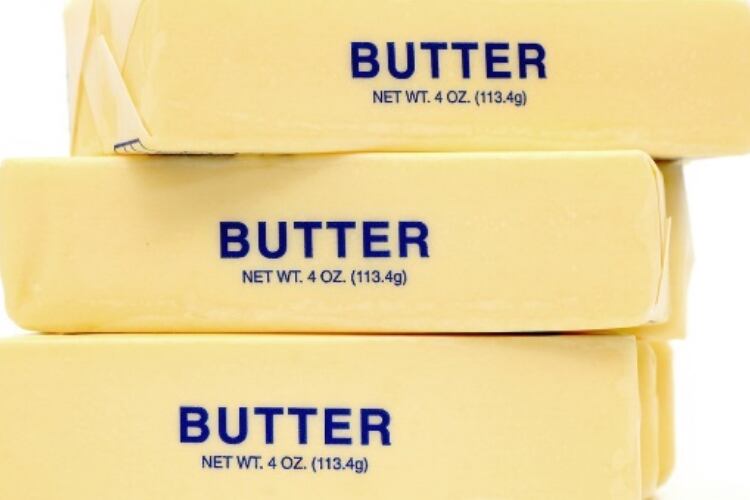They said their results will help dairy producers optimize butter-making processes to obtain the desired properties in the final product.
In the Journal of Dairy Science, the authors note aging of cream is an important process to manage production time and to produce butter with consistent quality.
The study evaluated the combined effect of temperature (5, 10, and 15°C) and agitation rate (0, 40, and 240 rpm) during aging of cream on the physical properties of cream and butter in a model system.
Cream's solid fat content (SFC), melting behavior, and droplet size distribution were measured during and after 90 min of aging, while butter’s physical properties such as melting behavior, water content, and hardness were measured.
Differences observed
SFC increased faster at 5°C, and the maximum SFC was the highest at this temperature. An effect of agitation on SFC occurred only when cream was aged at 15°C. Agitating cream at 40 rpm increased the droplet size regardless of aging temperature.
The hardest butter was obtained when cream was aged at 5°C with 240 rpm and at 10°C with 40 rpm. Softer butter resulted with cream aged at 10°C at 240 rpm. This butter also had the highest water content.
Cream aged at 15°C did not turn into butter within 14.5 min of churning regardless of agitation or agitation rate, the researchers attributed this to the SFC being too low for partial coalescence to occur.
Low temperature plus agitation
Previous studies have shown aging of cream at low temperature delays butter formation due to a high level of crystallized fat that inhibits the leakage of liquid fat from the oil droplet. This study showed butter can be formed at low temperature when agitation is applied during aging.
In addition, the authors said the hardness of the butter can be controlled by the aging conditions of the cream. For a constant aging temperature (10°C), harder butters were obtained when the cream was aged under low agitation.
The authors said the study shows butter hardness can be tailored by changing the aging conditions of the cream. Cream can be aged at higher temperature with low agitation without altering the hardness of butter.
They noted that further research is required to explore the microstructure of butter for crystallization behavior under different aging conditions and to reproduce the results in production at the industrial scale.
Source: Journal of Dairy Science
Effect of cream aging temperature and agitation on butter properties
Jiwon Lee and Silvana Martini
https://doi.org/10.3168/jds.2018-14725

